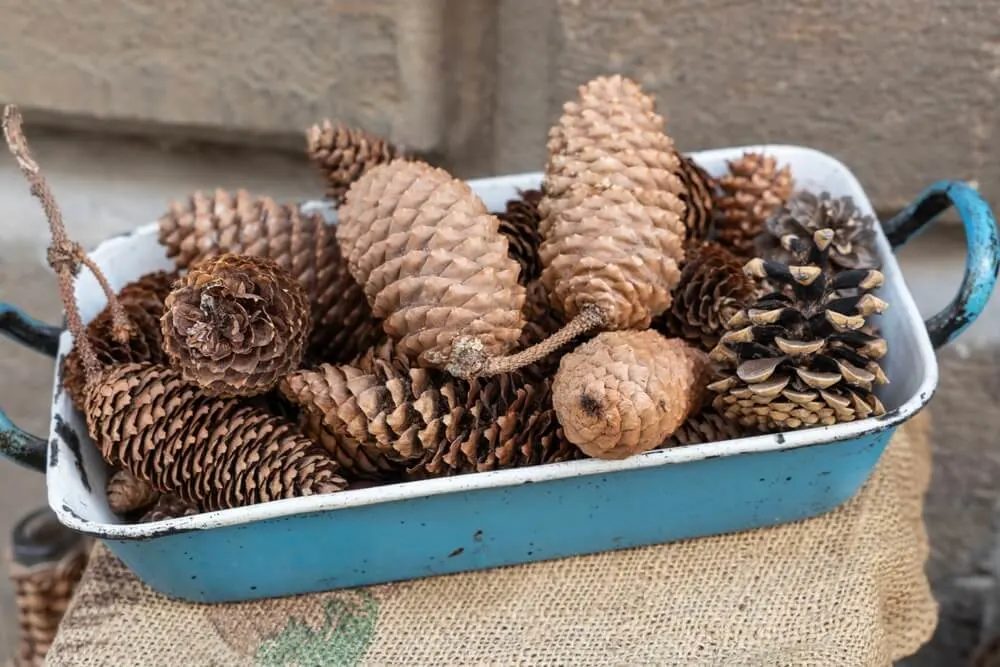When purchasing planters for your garden, you’ll notice they come in various shapes and sizes. Of course, the largest ones are used for shrubs or some smaller tree species.
When planting your green buddies, you can fill the entire planter with a growing substrate. But in most cases, the upper two-thirds of the soil ensures enough space for the plant to grow.
The great thing is that you can add some other materials to the bottom of your container. And one of the best choices for this purpose is pinecones.
In this article, I’ll show you why you should start adding pinecones to the bottom of your planter!
Why Add Pinecones?

The first benefit of pinecones is that they’re lightweight and will reduce the overall weight of your container. Planters filled entirely with soil can be pretty heavy, which definitely isn’t good news for gardeners.
As you may know, too much soil retains too much moisture, which can cause numerous issues in your plants. By using pinecones, you’ll use less soil, which means less moisture!
Pinecones deserve to be a part of your garden because they’re all natural and won’t leach any chemicals into the soil. When compared with bubble wrap or plastic bottles, pine cones are definitely a better choice.
By adding pinecones to the bottom of your containers, you save money on soil. I’m sure many of you already have free access to pine cones; pick them up in your garden or nearby woodlands. And even if you need to buy some, they aren’t nearly as expensive as the soil.
These natural treasures are renowned for their low density and ability to create air pockets that enhance drainage and root health.
Because they break down into the soil over time, pinecones will boost nutrient levels in the soil. Additionally, they can slightly raise acidity, which is super beneficial for acid-loving plants.
Which Pinecones To Choose
Basically, any pinecone can be used for the bottoms of planters. However, there are some things to consider if you want them to reach their full potential.
If possible, always select larger pinecones, i.e., the ones that have more space between bracts. Densely packed bracts won’t create enough air pockets, so you should avoid using them.
It’s always advisable to use the cones that have already fallen on the ground. The reason is simple, they start to dry up as soon as they fall off the tree, making them more lightweight.
Additionally, these pinecones have already started to decompose and they’ll break down into the soil faster.
If you find some pine needles on the ground, add them to the bottom of your containers, too. They can enhance drainage but make sure they don’t carry any fungal diseases.
The last thing you want is for your prized plants to get infected!
How To Put Pinecones In Planters
The last thing to learn is how to add your pinecones to containers for the best results. Put them at the bottom but make sure there is enough space for the plant roots to develop and the soil to settle.
You should fill in approximately one-third of your planter, unless you grow plants that need a lot of space to grow.
Take your growing substrate and add it over your pinecones. Make sure you fill all the spaces; pinecones will break down and there will be an excellent airflow in your planter.
Remember that the level and volume of the growing substrate can change over time because the cones are breaking down. You can fix this by adding more soil to the container.
If you have smaller containers, you can still use cones, but make sure you select the smaller ones.
Adding these gems to the woodchipper is a great idea if you need mulch for your garden. If you have problems with pets digging up your plants, put a few smaller pinecones on the surface to deter these curious critters.
